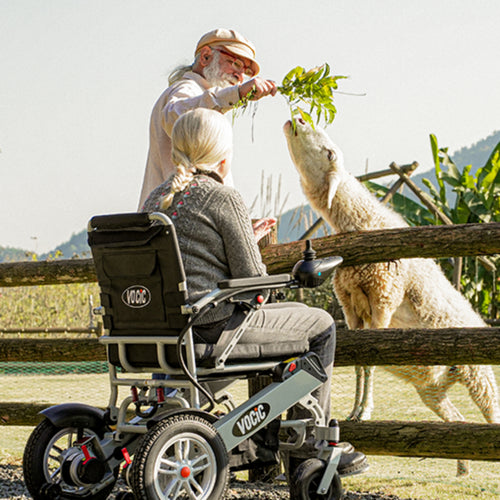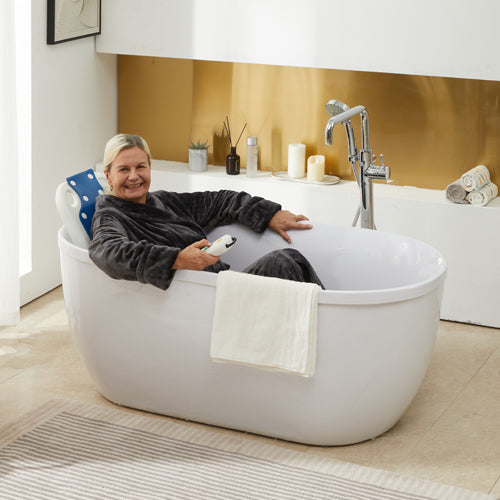Hoyer lifts are mobility devices designed for people with limited mobility that can help patients be safely transferred between a variety of settings including home, hospital, and nursing facilities. This article explores what Hoyer lifts are and how they can be used to improve the safety and comfort of patients and caregivers during transfers.
What Is a Hoyer Lift?
The Hoyer Lift is a mechanical device that helps people with limited mobility to be transferred safely. It consists of a sturdy base with wheels, a mast, a boom, and a sling. The Hoyer Lift allows caregivers to move patients from bed to wheelchair, toilet, or other places without much physical effort and with a reduced risk of injury. It is therefore ideal for use in a variety of settings, such as homes, hospitals, and care facilities. The Hoyer Lift provides a safe and comfortable way to transfer patients, improving patient care and caregiver safety.

What Types of Hoyer Lifts Are There?
Hoyer lifts are commonly used in medical and home care settings to assist with the transfer of people with limited mobility, and there are several different types to suit different needs and situations. Here are some of the main types of Hoyer lifts:
-
Manual Hoyer Lift
Manual Hoyer Lifts are lifts that use a hydraulic pump lever to raise and lower the patient. They do not rely on electricity, providing a simple and reliable solution for safe patient transfers, making them ideal for consumers with limited power supplies or budgets.
-
Electric Hoyer Lift
Electric Hoyer Lift is a lift that can be powered by a rechargeable battery and controlled by a handheld remote control. They are easy to use and do not require much physical effort from caregivers, suitable for frequent use and professional medical environments. Like the VOCIC AY02 Electric Patient Lift, it has a powerful motor and control panel that can provide smooth and quiet operation. In addition, it has a high weight-bearing capacity and an adjustable base width to meet the needs of different patients.
-
Sit-Stand Lift
Sit-Stand Lifts are suitable for patients with a certain weight capacity. They allow patients to transition from a sitting to a standing position, as well as encouraging patient mobility and independence. They also reduce the risk of injury to patients and caregivers during transfers, making them a practical choice for home care and healthcare facilities.
-
Overhead/Ceiling Lifts
Overhead or ceiling lifts are permanently installed systems that move patients on tracks mounted on the ceiling. They provide the flexibility and ease of movement needed in hospitals or homes where long-term care is required. These lifts are ideal for patients who need to be transferred frequently, as they can be moved between different areas, such as from bed to wheelchair or bathroom.
Each of the above types of Hoyer lifts has a specific purpose, improving the quality of life for people with limited mobility while ensuring a safe and easy transfer process for the caregiver.
How to Use a Hoyer Lift?
There are several steps to properly use a Hoyer lift, and understanding these steps can ensure the safety and comfort of the patient and caregiver. Here is a step-by-step guide to using a Hoyer lift:
1. Preparation
Before using a Hoyer lift, first make sure the lift is in good working order and, if using an electric model, that the battery is fully charged. Next, position the lift close to the patient with a wide, stable base that provides maximum support. Finally, inform the patient about the procedure and ensure their cooperation and comfort.
2. Positioning the Sling
Roll the patient onto their side and place the sling under them, ensuring it supports their entire body. Finally, roll the patient onto their back and smooth out any wrinkles or creases in the sling to ensure the patient is comfortable and secure.
3. Attaching the Sling to the Lift
Attach the sling straps to the hooks on the lift boom, being careful to follow the manufacturer's instructions for proper attachment. Double-check that all straps are securely fastened before proceeding to ensure the patient is secure during the lift.
4. Raising the Patient
Slowly raise the patient by pumping the hydraulic lever (manual lift) or using the control handle (electric lift). This should be done smoothly and stop as soon as the patient leaves the ground. Also, check that the sling is secure and the patient is comfortable throughout the lift.
5. Transferring the Patient
First, carefully move the lift to the desired location, such as a walker, wheelchair, toilet, or bed, moving slowly to ensure safety. Then place the patient in their new position, and finally gently lower them by reversing the lifting process, ensuring they are properly seated or lying down.
6. Removing the Sling
Once the patient is safely in place, the sling can be removed from the lift. Then carefully remove the sling from under the patient, ensuring their comfort and avoiding sudden movements.
By following these steps, you can safely and effectively use a Hoyer lift to assist patients with limited mobility, ensuring a smooth, safe transfer.

How to Choose the Right Hoyer Lift?
Choosing a Hoyer lift that meets your needs requires consideration of several factors to ensure the safety, efficiency, and comfort of the lift you choose. Here are some selection guidelines to help you make the right choice:
-
Assess Patient Needs: Consider the patient's mobility, weight, and specific health conditions. For example, if a patient can bear a certain amount of weight, they may need a sit-to-stand lift, while others may need a full-body lift.
-
Determine the Frequency of Use: Consider how often the lift will be used. For patients who use it frequently, an electric Hoyer lift may be more practical because it is easy to use. Whereas a manual lift may only be used for occasional transfers.
-
Assess Space and Environment: Assess the environment in which the lift will be used. Make sure there is enough room to maneuver the lift around furniture and through doorways. If your home has limited space, a compact or portable model may be your best option.
-
Check Weight Capacity: Make sure the lift you choose can support the patient's weight. Hoyer lifts come in different weight capacities, so choosing one that can easily lift the patient's weight is a safe choice.
-
Consider Ease of Use: Look for lifts with features that enhance usability, such as easy-to-operate controls, an adjustable base for navigating tight spaces, and ergonomic designs that can reduce stress on caregivers.
-
Check Power: Choose between a manual or electric lift based on your preferences and needs. Electric lifts offer convenience and less physical exertion, while manual lifts are more affordable and don't require charging.
-
Review Sling Options: Different lifts come with a variety of sling options. Make sure the lift you choose is compatible with a sling that meets your patient's comfort and support needs. Some patients may need specialized slings for added support.
-
Budget Considerations: Consider the cost of the lift and the additional accessories or slings you may need. While manual lifts are less expensive, electric lifts are worth the investment for frequent or long-term use.
-
Read Reviews and Testimonials: Read reviews and testimonials from other users of each type of product so you can evaluate the reliability and performance of different Hoyer lift models. Real-world feedback can provide valuable insights into the pros and cons of each lift.
By considering these factors, you can select the right Hoyer lift for your patient or family member, ensuring safety, comfort, and ease of use.
Conclusion
In conclusion, knowing the various types of Hoyer lifts, such as manual, electric, and special models, allows caregivers to choose the most appropriate equipment based on the patient's needs and the environment in which it is used. The correct use of the lift can make the patient safer, more comfortable, and dignified while being easy to operate and reducing the risk of injury to caregivers.
If you are looking for an easy-to-use, safe transfer lift for your family or patients, the VOCIC AY02 is a great choice. It is a state-of-the-art lift equipped with a powerful motor and control panel that makes the transfer process smooth and easy. In addition, VOCIC also provides other mobility safety products such as shower chairs, motorized wheelchairs, and mobility scooter foldable. Each product can improve mobility solutions and quality of life for people with disabilities. For more information, please visit the VOCIC website.







